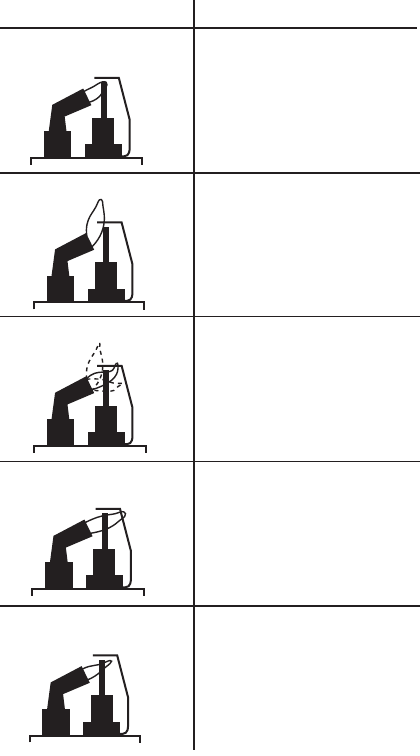
Y8610U INTERMITTENT PILOT RETROFIT KIT
68-0291—03 18
STEP 4: Check Pilot and Main Burner
Lightoff.
1. Set the thermostat to “Call for Heat.”
2. Watch the pilot burner during the ignition sequence. See
if one of the following occurs:
a. Ignition spark continues after the pilot is lit.
b. The pilot lights and the spark stops, but main burner
does not light.
c. The pilot lights, the spark stops and main burner
lights, but the pilot and main gas shut down while the
“Call for Heat” is still present.
3. If so, ensure adequate flame current as follows.
a. Turn off furnace at circuit breaker or fuse box.
b. Clean the flame rod with emery cloth.
c. Make sure electrical connections are clean and tight.
Replace damaged wire with moisture-resistant No.
18 wire rated for continuous duty up to 221°F
(105°C).
d. Check for cracked ceramic insulator, which can
cause short to ground, and replace igniter-sensor if
necessary.
e. Check for cracked, damaged, burned, or dirty spark
ignition cable and replace if necessary. Be sure igni-
tion cable is not touching any flat metal surface.
f. At the gas control, disconnect main valve wire from
the TH-W or MV terminal.
g. Turn on power and set thermostat to “Call for Heat.”
The pilot should light but the main burner will remain
off because the main valve actuator is disconnected.
h. Check the pilot flame. Make sure it is blue, steady
and envelops 3/8 to 1/2 in. (10 to 13 mm) of the
flame rod. See Fig. 20 for possible flame problems
and their causes.
i. If necessary, adjust pilot flame by turning the pilot
adjustment screw on the gas control clockwise to
decrease or counterclockwise to increase pilot flame.
Following adjustment, always replace pilot adjust-
ment cover screw and tighten firmly to assure proper
gas control operation.
j. Set thermostat below room temperature to end “Call
for Heat.”
4. Recheck ignition sequence as follows.
a. Reconnect main valve wire.
b. Set thermostat to “Call for Heat.”
c. Watch ignition sequence at burner.
d. If spark still doesn’t stop after pilot lights, replace
ignition control module.
e. If main burner doesn’t light or if main burner lights but
system locks out, check the ignition control module’s
ground wire and the gas control as described in “Igni-
tion System Checks” on page 17 and refer to the
Troubleshooting Guide (Fig. 22 on page 21).
Fig. 20. Examples of unsatisfactory pilot flames.
LAZY YELLOW FLAME
WAVING BLUE FLAME
NOISY LIFTING BLOWING
FLAME
HARD SHARP FLAME
SMALL BLUE FLAME
CHECK FOR LACK OF GAS FROM:
• CLOGGED ORIFICE FILTER
• CLOGGED PILOT FILTER
• LOW GAS SUPPLY PRESSURE
• PILOT ADJUSTMENT AT MINIMUM
CHECK FOR LACK OF AIR FROM:
• DIRTY ORIFICE
• DIRTY LINT SCREEN, IF USED
• DIRTY PRIMARY AIR OPENING,
IF THERE IS ONE
• PILOT ADJUSTMENT AT MINIMUM
CHECK FOR:
• EXCESSIVE DRAFT AT PILOT
LOCATION
• RECIRCULATING PRODUCTS
OF COMBUSTION
CHECK FOR:
• HIGH GAS PRESSURE
THIS FLAME IS CHARACTERISTIC
OF MANUFACTURED GAS
CHECK FOR:
• HIGH GAS PRESSURE
• ORIFICE TOO SMALL
M2233B
APPEARANCE
CAUSE
